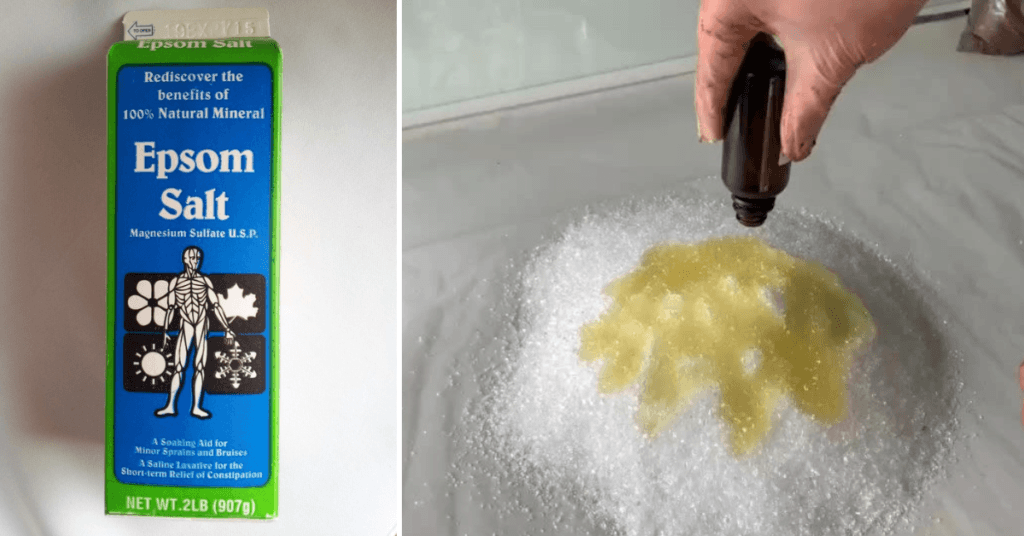Exploring the Marvels of Epsom Salt: Unveiling Its Uses and Benefits
If you’ve ever sought medical advice for joint or muscle pain, chances are you’ve been recommended an Epsom salt bath. While Epsom salt baths are not a universal panacea, according to Jesse Bracamonte, MD, DO, a family medicine physician in the Mayo Clinic Health System, they can offer relaxation and relief from muscle tension. However, Epsom salt has more to offer beyond its soothing properties, albeit caution should be exercised as it is not meant for ingestion and may not be suitable for everyone.
What Exactly is Epsom Salt?
Click ‘Next Page (>)’ to keep reading and don’t forget to SHARE with your Facebook friends
What Exactly is Epsom Salt?
Epsom salt, a naturally occurring mineral compound, consists of magnesium, sulfur, and oxygen. Despite sharing a name with table salt, Epsom salt is a distinct compound used for various purposes. It was named after the English town where it was first discovered in the 1600s. While historical anecdotes suggest its effectiveness in treating ailments like constipation and eclampsia, scientific evidence was lacking at the time, as highlighted by Bracamonte.
The Versatility of Epsom Salt
Presently, Epsom salt remains a popular remedy for an array of conditions. Research from the U.S. National Research Council Committee on Diet and Health demonstrates the crucial role of mineral salts in regulating functions such as neuromuscular transmission, blood clotting, and enzymatic activity, as well as in supporting skeletal and soft tissues.
Epsom salt is commonly taken as a supplement or incorporated into beauty products like body scrubs, body washes, and nerve-soothing lotions. Some individuals even dissolve it in water for consumption, believing it aids digestion. However, Bracamonte advises against this practice due to potential dehydration and other health risks. Safer and proven laxative options are available on the market.
The Benefits of Epsom Salt Baths
Click ‘Next Page (>)’ to keep reading and don’t forget to SHARE with your Facebook friends
The Benefits of Epsom Salt Baths
While Epsom salt has limited use as a supplement or beauty product, its primary application lies in bathing. Epsom salt baths differ from sitz baths, as they involve adding Epsom salt to warm water for a full-body experience. Solomon David, MD, a colorectal surgeon at NYU Langone Health, explains that such baths are primarily used to alleviate muscle aches, tension, stress, and promote overall well-being. They are regarded as a form of self-care and relaxation, rather than targeting specific conditions.
The Science Behind Epsom Salt’s Effectiveness
Adam Tenforde, MD, director of running medicine for Mass General Brigham, clarifies that when Epsom salt is dissolved in water, it breaks down into magnesium and sulfate, which can be absorbed through the skin. While the absorption mechanism requires further study, it is believed to offer benefits such as migraine and headache relief. Additional research suggests that Epsom salt baths may reduce swelling and pain associated with arthritis and fibromyalgia. Bracamonte also highlights its potential as a sleep aid, although more research is necessary.
Safety and Considerations
Fortunately, there are no significant side effects associated with Epsom salt baths. However, it is not advisable for post-surgery recovery or for individuals with active inflammation, infection, or burn injuries.
In conclusion, Epsom salt unveils an array of uses and benefits. Although not a miraculous remedy, it can provide relaxation, muscle tension relief, and potentially aid in various conditions. By understanding its applications and using it appropriately, individuals can harness the potential of Epsom salt for their well-being.
